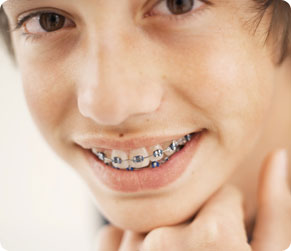Treatment Timing for Children
 Dr. Bernardo Rodriguez believes in and follows the guidelines established by the American Association of Orthodontists by recommending that an orthodontic evaluation take place at age 7 for all children. This early evaluation can help to determine the best time to begin any necessary treatment. Most children do not need early intervention but only an orthodontist can make that evaluation.
Dr. Bernardo Rodriguez believes in and follows the guidelines established by the American Association of Orthodontists by recommending that an orthodontic evaluation take place at age 7 for all children. This early evaluation can help to determine the best time to begin any necessary treatment. Most children do not need early intervention but only an orthodontist can make that evaluation.
Orthodontic concerns can be divided between skeletal problems and dental problems. By the time all the permanent teeth erupt, the majority of facial growth has occurred and treatments for a condition can be limited. Early evaluation gives the opportunity, when appropriate, to guide jaw growth, correct harmful habits, lower the risk of injury to protruded teeth, guide permanent teeth into more favorable conditions, and provide more space for the permanent teeth.
Many progressive treatments are now available for patients 7 to 11 years of age, that provide significant benefits, especially when jaw irregularities are present. These treatments may also prevent certain conditions from worsening. Treating children with these types of problems during their growth stages allows our practice to achieve results that may not be possible when face and jaw bones have fully developed. This early treatment can simplify or eliminate additional treatment for the child.
Since it is not always easy to tell when your child has an orthodontic problem, our practice it’s important for that first orthodontic checkup no later than age 7.
Here are some clues that may indicate the need for orthodontic attention:
- early or late loss of baby teeth
- difficulty in chewing or biting
- breathing chronically through the mouth
- thumb-sucking
- tongue thrusting
- crowded, misplaced or blocked-out teeth
- jaws that are too far forward or back
- protruding teeth
- upper and lower teeth that don’t meet
- unbalanced facial appearance
- grinding or clenching of the teeth
- lips that are apart when at rest